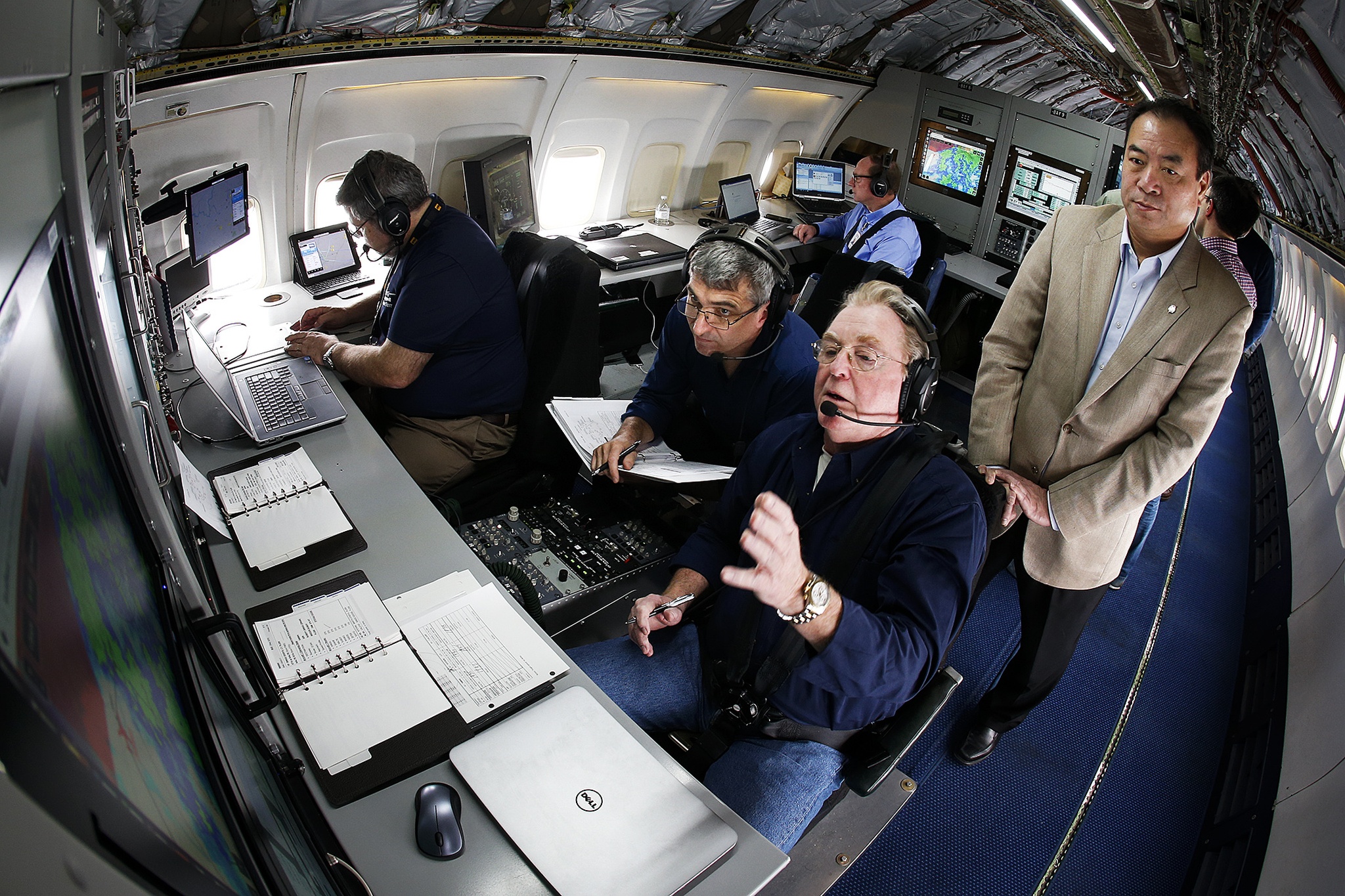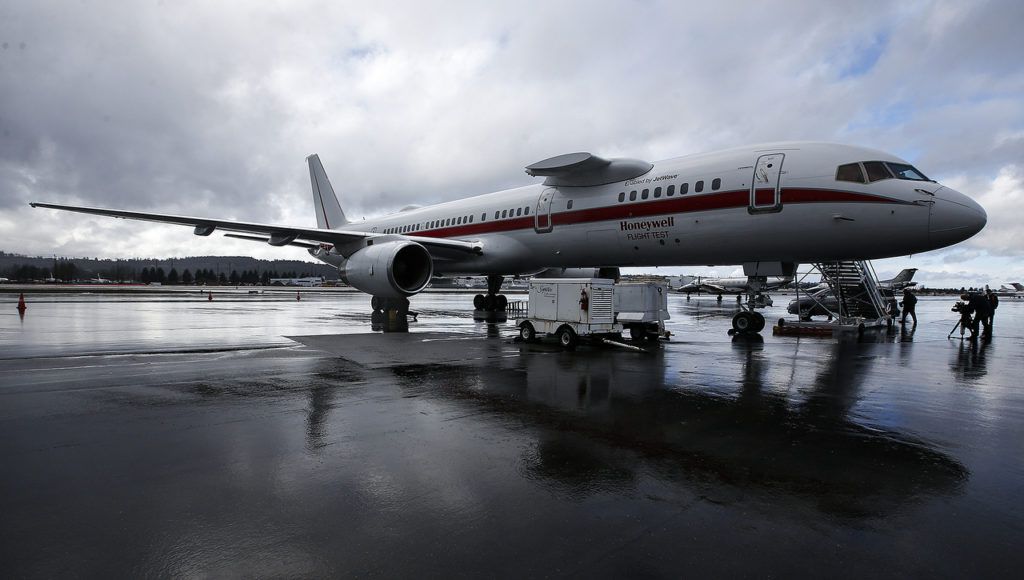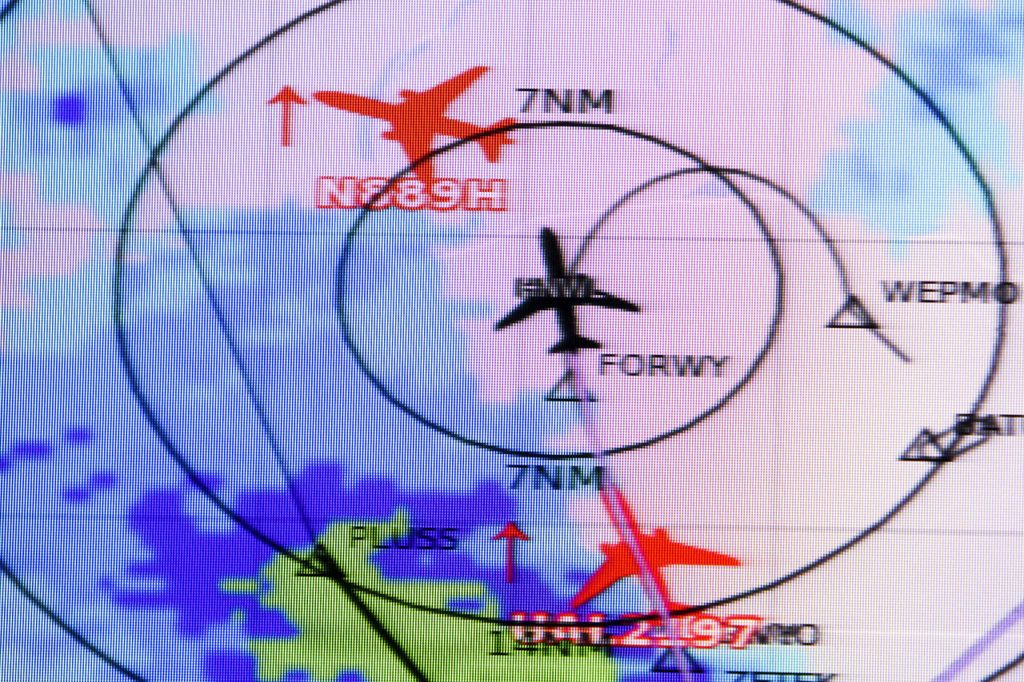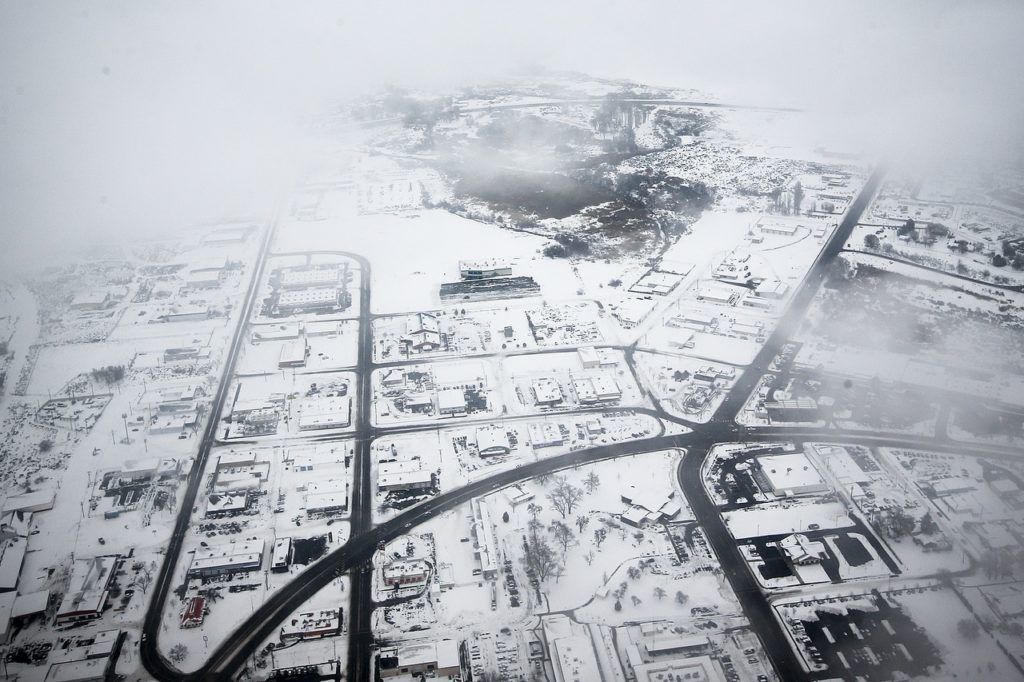MOSES LAKE — The airplane dropped down low over Central Washington. Snow-covered farming towns peeked through holes in the clouds hugging the ground. Many of them are too small to have a traffic signal.
The streets are not crowded around Moses Lake. However, flight paths used by commercial jets are becoming increasingly congested — a problem expected to grow as more and more Americans travel by air.
Addressing that problem is what brought researchers from NASA and Honeywell over Moses Lake and the adjacent Grant County International Airport. They are about halfway through a month of test flights for technology that promises to cut down on congestion over busy airports.
“No passenger likes holding in the air. Airlines don’t like spending extra fuel waiting to land,” said Leighton Quon, a NASA researcher with the Air Traffic Management Technology Demonstration-1, which includes the software being tested over Moses Lake.
The new software is part of the Federal Aviation Administration’s ambitious NextGen initiative to modernize how flights are managed in America’s skies.
The test flights involve three airplanes — a business jet, Honeywell’s Boeing 757 research plane and a United Airlines 737 — making repeated practice approaches at the Grant County airport.
The nimble business jet — a Dassault Falcon — leads the way, broadcasting its speed and position to the 757 and 737. Tablets in the cockpits of the two Boeing jets tell the pilots exactly how fast they should be flying and how much space to keep between the plane ahead. That allows them to fly far closer than the current system, which relies on air traffic controllers on the ground telling pilots the speeds and distances to maintain.
Controllers “are on their own, eyeballs on the screen,” Quon said.
They put safety ahead of efficiency. That means accidents are prevented but sometimes passengers are stuck overnight at the airport.
The Air Traffic Management Technology Demonstration-1 includes the flight deck software and tools for controllers on the ground. NASA finished developing those ground-based technologies, which the FAA plans to test in the real world in 2019. NASA hopes to hand over the flight deck tool to the FAA for certification in the fall of this year.
The benefit is not only for fliers in and out of New York, Los Angeles and other high-traffic areas. Congestion in those hubs ripples through airlines’ networks across the country. So, a plane stuck in a holding pattern due to bad weather around New York could cause delays and missed connections across the country.
The project is expected to cost $100 million over five years. That is a drop compared to the roughly $1 billion the FAA is spending each year on NextGen.
Critics have attacked the program as costing too much and delivering too little. During a meeting Thursday with airline executives, President Donald Trump said the initiative is “totally out of whack” and overpriced, according to news reports.
Proponents say that bringing air traffic control into the 21st century cannot be done on the cheap, and the benefits will outweigh the costs.
“Today’s flight tests demonstrate the success of NextGen technologies, which are contributing to a safer and more efficient air traffic control system,” said U.S. Rep. Rick Larsen, the senior Democrat on the House’s Aviation Subcommittee. “I will continue working to ensure NextGen moves forward in a way that supports safer, faster flying throughout America’s airspace system.”
The current system is still rooted in the very first way-finding aids deployed nearly a century ago, when bonfires on the ground directed mail pilots from one airfield to the next. The fires were replaced by electric lights and later became radar beacons, which pilots still use today to find their way between airports.
Radar and radio made for safer and more efficient landings and takeoffs at airports. However, they still rely on air traffic controllers manually sorting and scheduling flights coming and going.
Air traffic management tools and other NextGen innovations promise a more efficient system, “but that future is still far off,” said Rui Neiva, a policy analyst at the Eno Center for Transportation, a think tank in Washington, D.C.
A report issued last November by the U.S. Department of Transportation’s Inspector General raised concerns about the program’s ability to deliver on its promises.
Dan Catchpole: 425-339-3454; dcatchpole@heraldnet.com. Twitter: @dcatchpole.
Talk to us
> Give us your news tips.
> Send us a letter to the editor.
> More Herald contact information.





























